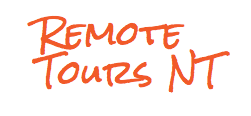For thousands of years Aboriginals have been using fire to hunt animals, maintain ecosystems and manage the land. In a practice called Cool Burning, often referred to as Cultural Burning, small blazes are set alight to clear the underbrush. This process generates patchy habitats preferred by small animals and prevents lightning and wildfires from consuming the land.
Unfortunately, with centuries of Euro-Australian suppression of Aboriginal people, the practice of Cool Burning has diminished. Early settlers viewed fire as a threat and were unable to perceive of Cool Burning as a landscape-management practice. This has since exacerbated ecosystem degradation and put much of our land at risk of wildfires. The life severe consequences of this shift in land management became apparent during our recent bushfire season, which consumed more than 18.626 million hectares of land and killed 1.25 billion wild animals. There has since been a surge of interest from farmers, landowners and communities wanting to learn about these traditional burning practices and how they could be implemented nationwide.
For most non-Indigenous, urban and even agricultural people, fire is perceived as a destructive force and considered anti-civilisation. However, fire holds great spiritual meaning in Aboriginal culture, with many stories, memories and dance being passed down around the fire. Fire also connects Indigenous people to the land, with children as young as four learning about the healing powers of fire for the land and it’s symbolic significance in Aboriginal culture.
Watch the video below for an explanation of how traditional Indigenous fire practices can heal and protect the landscape.
• Preventing life threatening wildfires• Rejuvenate local flora and protecting native animal habitats.• Preserving the tree canopy, which is important for maintaining shade in the bush, protecting vulnerable canopy animals from ground predators, providing a refuge for animals during fire and reducing carbon output (as large canopy fires release mass amounts of carbon into the air).• Triggering seed germination on the ground which helps hold soil together and provides a source of food for native animals.• Providing natural medicinal benefit for animals, such as wallaby’s and birds who bathe in cool ash to cleanse themselves to get rid of lice.• Restoring Aboriginal kinship to the land• The practice encourages elders to share their knowledge with younger generations. This ensures that the cultural practice grows stronger and gives longevity to not only the land, but the people who rely on it.






Copyright © 2026 All Rights Reserved | Privacy | Terms & Conditions